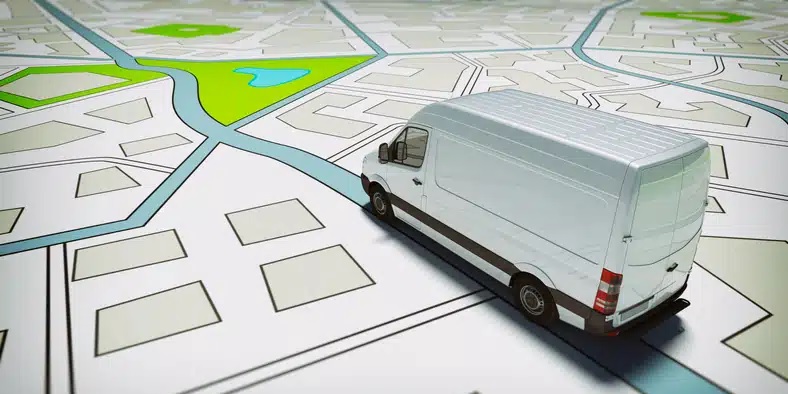Solutions for the transition to electric vehicles in government fleets

Local and state governments have made substantial strides toward fleet electrification. Of the twenty-five agencies involved with the American Cities Climate Challenge, twenty-two have purchased more than 1,300 EVs, and all plan to buy more in the future.
However, the transition to electric vehicles (EVs) holds many challenges for public fleets. Understanding the obstacles and solutions involved can ensure a successful transformation.
If your state or local agency is interested in joining this trend, use this guide to make informed decisions about your next steps.
Obstacles and solutions in the transition to EV fleets
There are four different obstacles standing between public organizations and EV fleets.
1. Charging station obstacles
The U.S. will need 1.2 million L2 chargers and 109,000 L3 chargers to support EV users in 2027. However, only 161,562 public and private ports are available nationwide—most city and state agencies don’t have enough to support 100% EV fleets.
The solution to this may be shared solutions, which are opportunities to split infrastructure with other partners in the community. Public/private partnerships secure access to charging stations even without space or funding for new additions.
2. Funding obstacles
The cost of an EV infrastructure is a barrier to many public organizations. EV charging stations cost $6,000 per L2 installation, while light-duty EVs cost $19,995 on the low end.
Grants may be a viable option for overcoming these funding obstacles. For example, Funding for the National EV Infrastructure program has reached $885 million in all fifty states. Several municipal-specific funding opportunities are also available for EVs and charging infrastructure.
3. Driver education obstacles
Many modern drivers lack the education necessary to drive or maintain EVs. Over 75% of those without EV experience have range anxiety, and only 38% believe that EVs are better for the environment.
Driver education is an excellent solution for accumulating buy-in and ensuring sustainable procurement. One study showed that drivers receiving EV education reduced energy expenditure by 16% and increased EV driving range by 20%.
4. Legislative obstacles
Only federal agencies are subject to the Biden Administration’s EV Acceleration Challenge. However, a time may come when city and state organizations are expected to follow country-wide rules.
A solution to this is EV-ready infrastructure, especially legislation requiring new buildings and parking lots to be EV capable. Doing so adds just 0.2% to the cost of construction and removes the expense of retrofitting.
EV adoption case studies for city governments
How can your government organization sustainably transition to EVs? Let’s look at a few inspirational case studies to better inform your decisions.
Boston: Cargo e-trikes for employee transportation
The city of Boston, Massachusetts, wanted to reduce unnecessary transports with the help of electric bikes. With traditional vehicles, it was making:
- ~6,500 fleet-share trips
- At a median round-trip distance of approximately nine miles
- ~2,500 trips at or below the median distance
With cargo trikes, the city was able to:
- Replace 32% of potential fleet-share rides with electric bikes
- Log 362 miles (average round trip of 4.25 miles)
- Reduce carbon emissions by at least 220 pounds (based on simple calculations)
Innovative methods of transportation may be an effective solution for greening your fleet.
Honolulu: Electrified public transportation
Honolulu, Hawaii, has put great effort into electrifying its public fleet. Over the past few years, the city has:
- Added seventeen fully electric buses
- Established ordinance 20-10 (25% of new parking stalls must be EV ready)
- Installed its first dedicated bus lane since 1988
It also plans to have a fully electric bus fleet by 2035.
Orlando: EV-ready code
The city of Orlando, Florida, is primarily focused on changing its legislation. Today, it has declared that at least 20% of multifamily, hotel, and parking structure spaces must be EV capable for future up-fitting. An additional 10% of non-residential parking spaces must be EV ready to reduce the city’s greenhouse gas emissions by 90% in 2040.
To reach 100% clean energy by 2050, Orlando plans to leverage strong partnerships and relationships.
Oneida County: Finding EV grants
Oneida County in New York state has effectively proven the power of grants. To date, the city has secured more than $708,229 in federal funding to install forty-one EV charging stations (level 2) in nine locations county-wide. Roughly 85% of this funding supports disadvantaged communities, creating a rising tide that lifts all ships.
If you’re interested in reading additional case studies, you’re welcome to investigate the American Cities Climate Challenge.
Using cooperative contracts in the transition to EVs
The strategic acquisition of EVs is the most sustainable method of transitioning to a greener future. As you phase out legacy infrastructure in favor of newer systems, consider replacing the traditional RFP with modernized cooperative contracts.
Sourcewell’s cooperative contracts for EVs provide several advantages to state and local entities:
- Faster acquisition times (from three years with an RFP to six weeks with a cooperative contract)
- Lower-cost purchasing (aggregate buying power improves access and reduces costs)
- Transparency (fully and competitively vetted cooperative contracts in North America)
You can browse all contracts online for free; just register your agency to speak with a supplier of choice.
The electrification of fleet vehicles can save city leaders and public fleet professionals money and time—and accelerate the progress to net-zero emissions in government fleets. Is your public fleet ready to transition to electric vehicles? See how Sourcewell can be a trusted partner in your EV journey.


